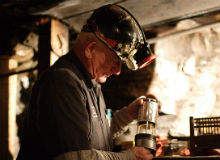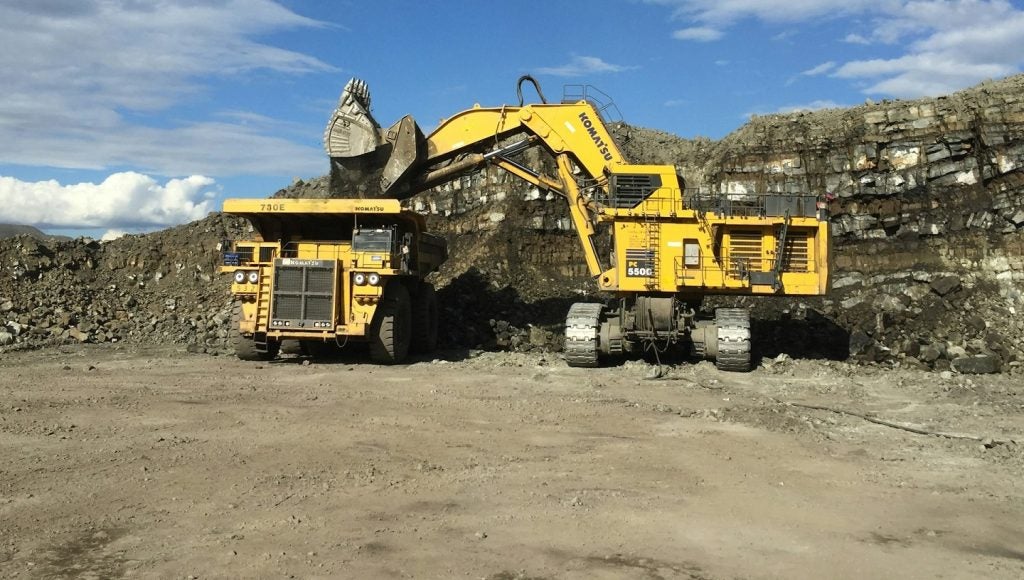

Twenty-eight miners died in work-related accidents in 2015, according to the US Mine Safety and Health Administration (MSHA) – eleven in the coal sector and 17 in the metal/non-metal sector. To put these figures into context, when the Federal Mine Safety & Health Act, which US miners currently operate under, was passed in 1977, 2073 mining deaths were recorded.
“The distance we have to go to get to zero [mining deaths] is much shorter,” says Joseph A. Main, who was nominated to serve as the assistant secretary of labour for mine safety and health at MSHA by Barack Obama in 2009. Main started working in coal mining when he was 18 years old and will celebrate his 50th industry anniversary next year.
When asked what he thinks resulted in 2015 being the safest year on record for US mining, Main attributes it directly to the work of the MSHA and the mining industry as a whole.
“Along the way we have been sending out alerts and messages in the mining industry about the need to improve mining examinations as that is how we catch and fix hazards before miners are injured or become ill and die from those hazards,” he says.
See Also:
Main also cites MSHA’s pattern of enforcement actions, which target chronic violators with quicker impact inspections sent out to mines that have particular problems or issues.
How well do you really know your competitors?
Access the most comprehensive Company Profiles on the market, powered by GlobalData. Save hours of research. Gain competitive edge.

Thank you!
Your download email will arrive shortly
Not ready to buy yet? Download a free sample
We are confident about the unique quality of our Company Profiles. However, we want you to make the most beneficial decision for your business, so we offer a free sample that you can download by submitting the below form
By GlobalDataClosures had their part to play
Many, however, point out that 2015’s marked improvement in safety is also attributable to a high rate of mine closures due to the ongoing commodities downturn.
“Some of the performers that were not as sophisticated, without question, were some of the mines that were closed during this time,” says Main.
“I will point out that in the coal sector, since I have been here, the two safest years in coal mining were 2011, which was the next safest year in the whole of the mining industry history, and is also the period from which we had the highest production and the highest employment rate in modern times,” he adds.
“This was replaced by 2015, when we had the lowest production and employment in the nation’s coal mines.”
Main adds that he has in fact been concerned over the last couple of years about maintaining the level of safety achieved after a number of mines underwent bankruptcy proceedings.
“This means that the capex on investments available has shrunk a lot and that is always something that increases the risk to miners, whether there is a lack of capitalisation on maintenance or on equipment, that can have an adverse effect,” he says.
The metal and non-metal sector
Looking at the metal and non-metal sector, 2011 and 2012 were recorded as the safest years in history. However, this changed at the end of 2013 when there was a sudden rise in fatalities, increasing from around 17 a year to 29 mining deaths in 2014. Main says the MSHA has worked hard to reverse this trend and put the industry back on course.
“We put together an action plan in 2014 – 2015 to try to turn back, reverse, that trend of high mining deaths in the metal/non-metal industry,” he says. “We were having some success and in August 2015 we had three mining deaths at three different operations in the metal/ non- metal industry. The next day I put us on a pretty much steroid approach to trying to get our heads around preventing these mining deaths. We upped our game at MSHA and implemented a number of enforcements and education outreach initiatives,. We called on the mining industry to do the same and we believe we have seen much better examinations of the work place by mine operators and vigilance by all of us that has helped lead to this [reduction in mining deaths].”
From 3 August 2015 there were only two more mining deaths recorded by industry. In 2016 so far, there have been six fatalities in the coal sector and nine in the metal/non-metal sector.
The Rules to Live By initiative
In 2010 Main launched the Rules to Live by initiative which took a decade-long look back at the mining industry to identify the most frequent causes of mining deaths, with the aim to draw attention to the most commonly cited safety and health standards that historically have caused or contributed to mining fatalities.
He says that after the Upper Big Branch Mine disaster in 2010, which claimed the lives of 29 miners, his team examined the events of the disaster and identified more standards.
In 2012 further standards were identified and the latest iteration of the code, Rules to Live By IV, was launched in May.
The new version highlight two standards that have contributed equally to a total of twelve fatalities over the decade ending 2015, according to the agency. They are a surface coal standard addressing safe lighting, 30 CFR 77.207, and a standard which requires scaling in underground metal/non-metal operations to be performed from a location that does not put miners at risk of injury from falling materials, 30 CFR 57.3201. “We are looking at protecting miners in these underground coal mines against crushing injuries with a proximity detection approach,” says Main. “I do believe that miners deserve the opportunity to go to work every day and come home safely – we can do that if we focus on it.”
According to the MSHA there has been a 10% reduction in all enforcement actions after implementation of Rules to Live By I, a 31% reduction in all enforcement actions after version II, and a 69% reduction in all enforcement actions after version III.
MSHA has also created an online tool that every mine operator in the US can use to see how many violations of the Rules to Live By standard it has, as well as to see how it stacks up against other mines and other sectors in the industry.
“[Companies] know themselves now if they need to make improvements, we are taking that report card out now and walking them through that as we do inspections,” adds Main.
Achieving zero fatalities
After his many years in the industry, what does Main see as the key factors to keeping a mine safe?
“I can tell you there are three basic things,” he says.
“One is you have train your miners effectively on all the hazards, whatever the regulations are, that is just the minimum. The second thing is you have got to conduct, as a mine operator, quality health and safety mine site examinations to identify hazards and find and fix those and you have to have a quality health and safety programme that really assesses the risk of your work place, and has in place health and safety measures to handle the issues, and that includes training miners.
“And, of course, having regulators such as our agency coming in to do an audit of mines to make sure at least the regulations are in place along with a number of the components we just mentioned.”
But health and safety is a process that never ends and Main’s aim is to get industry fatalities to zero.
“We believe the more attention we pay, the more attention we focus our agency on checking for those hazards are contained during these inspections, as the operators should be doing on every shift, we will bring that number down even more,” he says.
“I do believe we can have an industry in the US where it is a rarity to have a mining death and we can achieve zero fatalities.”







Related Company Profiles
U.S. Mine Safety and Health Administration